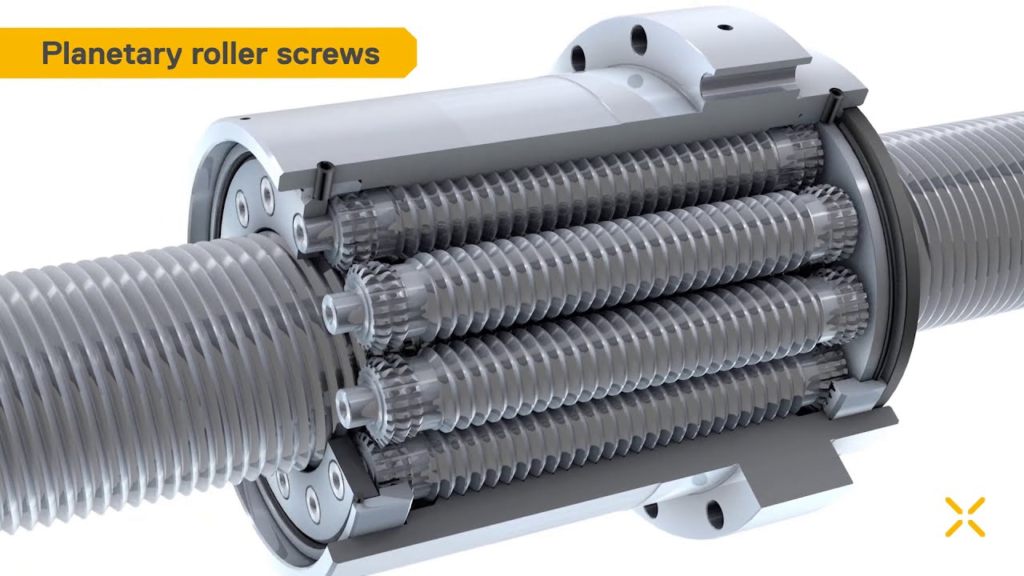
Planetary roller screws have emerged as a pivotal technology enabling the next generation of humanoid robots, combining precision engineering with unprecedented durability to meet the demanding requirements of advanced robotics. These components are rapidly displacing traditional ball screws in critical applications, driven by their superior performance characteristics and the growing needs of humanoid robot developers.
Technical Superiority Over Ball Screws
Planetary roller screws outperform ball screws through their innovative threaded roller design, which creates multiple contact lines rather than single-point contacts. This architecture delivers:
- 3x higher static load capacity compared to similarly sized ball screws
- 15x longer service life under comparable operating conditions
- ±5 micron positional accuracy through enhanced axial rigidity
- 90% efficiency retention after 5 million cycles, versus 65-70% for ball screws
- Operational capability across extreme temperatures (-20°C to 80°C)
The design enables humanoid robots to execute precise, high-force movements while withstanding the repetitive stresses of industrial environments. Jonathan Aitken, robotics expert at the University of Sheffield, notes these screws provide “the best of both worlds” by combining linear actuation precision with rotational load capacity.
Tesla’s Optimus Implementation Blueprint
Tesla’s Gen-2 Optimus robot demonstrates the technology’s potential through its sophisticated actuator system:
| Component | Specification | Location |
|---|---|---|
| Planetary roller screws | 14 units total (4 in calves) | Major joints |
| Actuator torque | 500N, 3900N, 8000N variants | Distributed system |
| Unit cost | $280 per screw ($4,000 total) | Bill of materials |
| System integration | Combined with harmonic reducers | Linear joints |
This configuration allows Optimus to achieve human-like fluidity in movements while maintaining the structural integrity required for industrial tasks like assembly and material handling.
China’s Strategic Manufacturing Push
While European and Japanese firms currently control 90% of China’s planetary roller screw market, domestic companies are executing aggressive expansion strategies:
Investment highlights
- Shanghai Beite Technology’s $260 million dedicated production facility
- Nanjing Technics developing military-grade precision models
- Nuoshi Robot creating “world’s smallest” screw for compact joints
Chinese manufacturers leverage existing drone actuator infrastructure to scale production, with the domestic humanoid robot market projected to create a 14 billion yuan ($2 billion) opportunity for screw suppliers. This aligns with broader goals to reduce reliance on foreign components and dominate emerging robotics supply chains.
Market Dynamics and Challenges
The global planetary roller screw market, valued at $1.8 billion in 2025, is projected to grow at 30% CAGR as humanoid adoption accelerates. However, key challenges persist:
- Cost barriers: Each screw costs $1,350-$2,700, comprising 33% of robot material costs
- Manufacturing complexity: Requires specialized grinding equipment and precision assembly
- Supply constraints: Fewer than 20 qualified global producers as of 2025
Industry leaders like Scott Walter of Visual Components emphasize that actuator costs remain the primary bottleneck for humanoid scalability, with each robot requiring 40+ precision actuators. Chinese manufacturers aim to address this through mass production innovations and vertical integration strategies.
As the humanoid robotics sector approaches commercialization, planetary roller screws stand as both a critical enabler and a strategic battleground. Their evolution will likely determine the pace at which humanoid robots transition from prototype workshops to factory floors and beyond.
